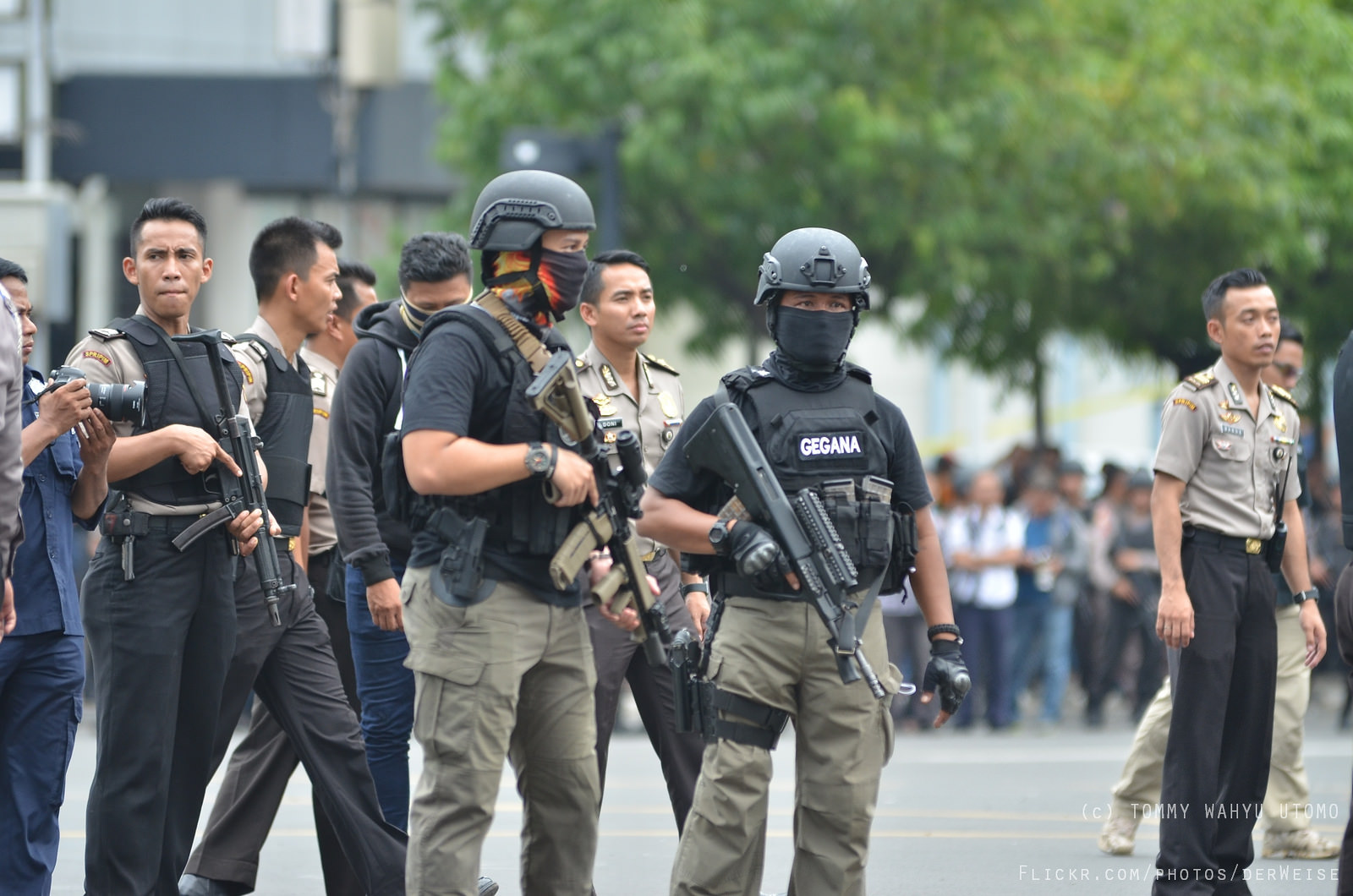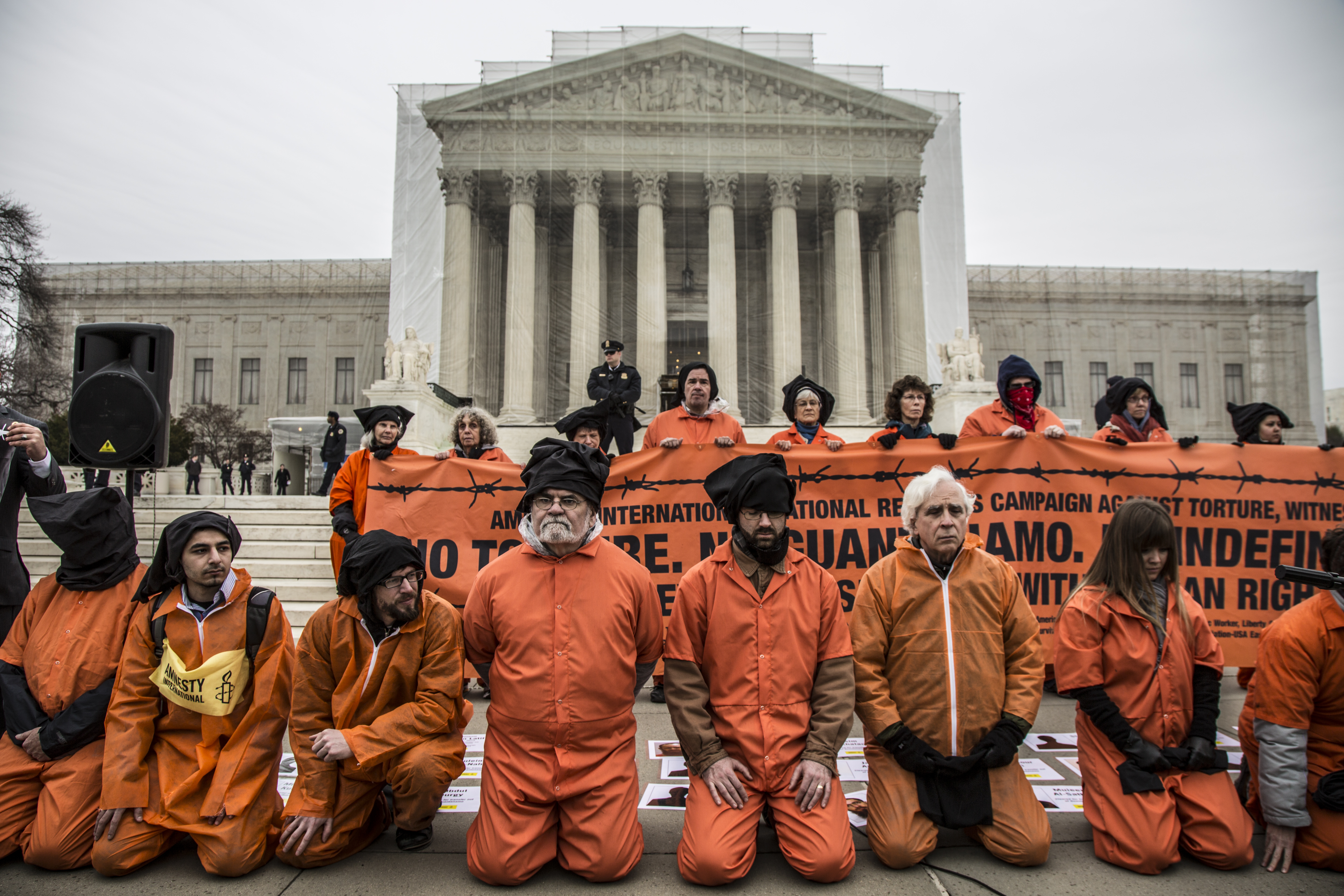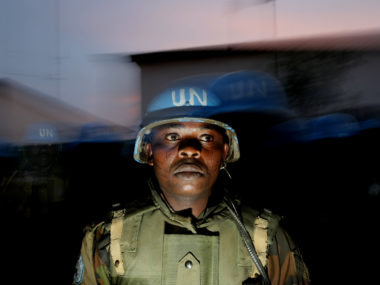Guest post by Ioana Emy Matesan
When suicide bombers and gunmen hit the heart of Jakarta last week, ISIS immediately claimed the attacks, proudly announcing that its soldiers are striking the crusader alliance in Indonesia. Making inroads into the third largest democracy and the largest Muslim majority country in the world would be a big propaganda boost for the group. But ISIS affiliates in Indonesia remain a relatively minuscule presence. The Islamic State entity in Indonesia varies drastically from its counterpart in Syria in terms of motivations, organization, and perhaps most importantly, ability to challenge the state or claim territory.
From its inception, ISIS manipulated local grievances to mobilize support. In Syria, these included the revulsion at the atrocities committed by Assad (for weekly reports on human rights violations see Syria Watch). In Iraq, the grievances were primarily towards the repression and inequalities perpetrated by the Shia political powers that be. What enabled ISIS to grow and eventually start building a skeletal state structure was the collapse of the rule of law (in both Syria and Iraq), the crisis of the state, and the descent into civil war in Syria.
Indonesia has seen its fair share of violence, and even some earlier attempts to build an Islamic state. During the state-formation process, the Darul Islam (DI) group formed to fight Dutch colonialism (access a classic study on DI here). The group quickly turned against the newly established Republic when the national leadership refused to give in to its demands and retained Pancasila as the state ideology. Somewhat reminiscent of ISIS aspirations today, the highly charismatic DI leader Kartosuwirjo rejected the political and physical contours of the newly established Indonesia Republic (for one of the most comprehensive studies on Kartosuwirjo, see here).
On August 7, 1949, he proclaimed the Islamic State of Indonesia (Negara Islam Indonesia – NII) in West Java. He envisioned the Islamic State as an alternative to the Republic and as the basis of an eventual regional caliphate. Kartosuwirjo developed a parallel state structure and his movement spread to other provinces of Indonesia, where Islamist goals overlapped with separatist aspirations and grievances against the Javanese domination of politics. But as the Indonesian state consolidated and gained legitimacy as a republic, DI started losing ground. Regional leaders struck agreements with the central government, individual fighters deserted when offered incentives or amnesty by the government, and the DI project eventually fizzled out, laying down its arms after its leader was arrested in 1962.
From the DI ashes emerged other networks of activists who contested the foundation of the Indonesia state. The leaders of the Jama’a al-Islamiyyah (JI), for example, envisioned the creation of a regional Islamic community that would eventually grow into an Islamic caliphate. JI members travelled to Afghanistan, where they received military training and established connections to Al Qaeda, which also infused the movement with new ideas about global jihad. But this radicalism did not lead to any violence in Indonesia until communal clashes broke out between Christians and Muslims in Ambon (in the Maluku Islands) in the beginning of 1999, and in Poso (Central Sulawesi) in 2000.
After 9/11, inspired by Al Qaeda and strongly opposed to the Indonesian cooperation with America in the Global War on Terror, some JI leaders broke off on their own and even though their cells were very small, few fighters were able to organize terrorist attacks in Indonesia between 2002 and 2009. The targets were primarily foreigners and Western symbols such as night clubs in Bali, the Marriot and Ritz Carlton hotels in Jakarta, and the Australian Embassy. Since 2009, however, there have been no major terrorist attacks in Indonesia. The trend that has been emerging over the last five years is a move away from hierarchical organizations and large scale attacks towards online, individual self-radicalization and decentralized networks of radical ideologues. Such is the case also with ISIS supporters in Indonesia, who are no more than several hundred across the entire archipelago.
This number is large enough to stage attacks such as the recent ones in Jakarta. But the number is minuscule when compared with the 50 million strong, pro-democratic and tolerant Nahdlatul Ulama (on their anti-ISIS and anti-extremism activities, see here). Compared to Syria and Iraq, there is also no significant challenge to the legitimacy of the Indonesian state or Indonesian democracy; there is no power vacuum or disintegration in the rule of law that these ISIS fighters could take advantage of.
To be sure, the threat of violence might not disappear in Indonesia. But it is important not to overreact to these attacks, not to overestimate the reach of ISIS, and not to conflate developments in the Middle East with developments in Southeast Asia. American involvement in counter-terrorism and harsh tactics by the police or Densus 88 (the counter-terrorism unit) have only spurred violent attacks before. Unlike many other countries countering terrorism, Indonesia has done many things right – it adopted a legalist rather than militaristic approach to counterterrorism and it has combined soft and hard tactics, understanding the importance of incentives, exit options, and respect for the rule of law. Rather than give in to an ISIS hysteria, the country should keep building on the lessons it has already learned from its tumultuous past.
Ioana Emy Matesan is Assistant Professor of Government at Wesleyan University.







